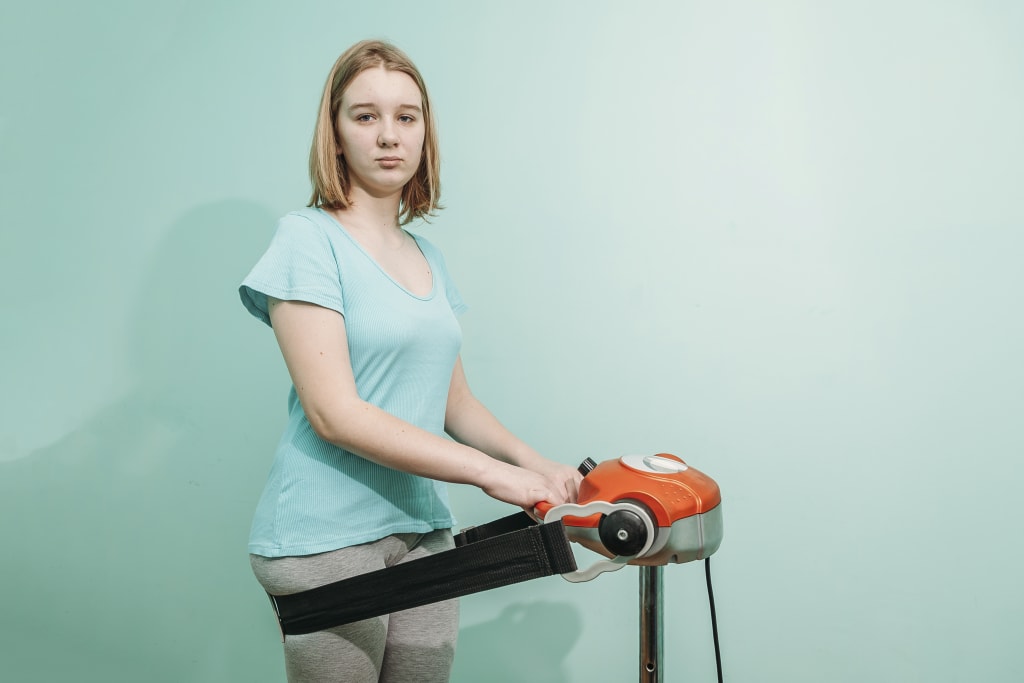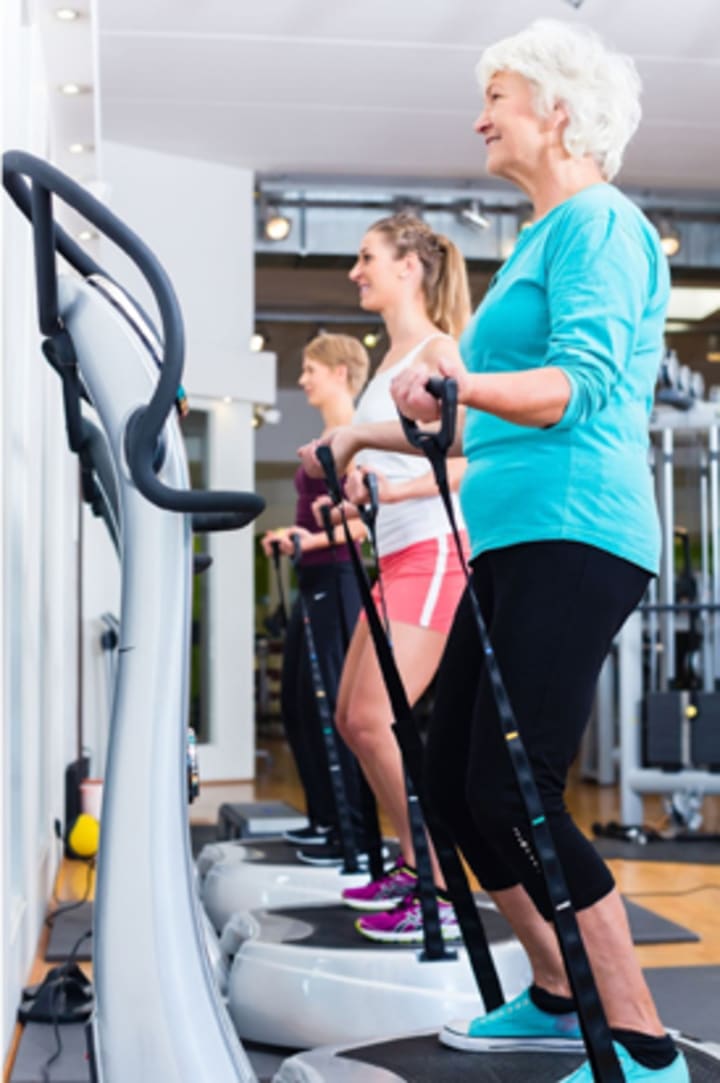Whole Body Vibration (WBV)
Real Benefit or Fantasy Endeavor

I was researching a health article when I came upon a reference to whole-body vibration (WBV). I thought this can’t be right, they're not really referencing those old 1950s belt-style passive exercise weight loss devices? Well, they weren’t. They were referencing new vibrating platforms.

I remembered those passive exercise machines didn’t work so why would anyone advance the vibrating machine technology to platforms. I figured if there is any credibility to these new platforms I would check PubMed for clinical studies. I was surprised.
The promise of WBV is as a passive exercise, think of sitting on your couch eating potato chips, while your legs are getting swole. Unfortunately, despite the hype some manufacturers may be telling you, this is not the case. Even so, there are clear benefits to WBV. They just may not be as dramatic as some will lead you to believe.
Platforms
There are a number of vibrating platforms and price points for the consumer to choose from. there are inexpensive titer-tot platforms and more expensive platforms that move up-down, forward and back, and side to side.
All the platforms stimulate vibrate your body and stimulate your muscles.
Counterindications for WBV
However, one counterindication for not using WBV is any retinal or eye problems. Certainly, if you have any eye issues check with your doctor first before using a WBV.
In fact, you should always check with your primary care physician before beginning any exercise or supplement program.
History of Whole-Body Vibration
Before examining the benefits of WBV, let’s look at where it all started.
The origin of vibration therapy is attributable to the ancient Greeks. They invented and devised several contraptions and procedures to aid in their therapeutic methods. One of these machines was a bow-like wooden machine. The apparatus is supposed to help soldiers’ wounds. The belief is that the vibration coming from the device would heal the soldiers’ injuries faster.
In the late 1800s, Gustav Zander presented multiple exercise machines that utilized vibration. The next development is from John Kellogg who improved upon Zander’s design and created what may be the first-ever whole-body vibration machine. Interestingly, Kellogg’s invention is much closer to the idea of passive exercise than what we have now, as his vibration machine was in the likes of a chair.
However, the interest in WBV as a modern-day therapy was initiated by a Russian program to train athletes then cosmonauts.

Soviet Connection
Russian sports scientist, D. Vladimir Nazarov, introduce vibration technology to competitive sports. It is said it helped the Russians win all the Gold in the 1960 Olympic Games.
After the fall of the Soviet Union, Nazarov’s research on WBV made its way into Europe. The interest in WBV was initiated by a Russian program to train cosmonauts. Using this technology in 1995 allowed Russian Cosmonaut Valery Polyakov to set a world endurance record of 438 days in space. American astronauts at the time had to return after 120 days. If you’re missing this, the Russians could stay close to a year longer in space than Americans.
Once the information was available, NASA and the European Space Agency in the 1990’s studied WBV for maintaining muscle strength, mass, and bone density for astronauts.
Good and Bad Vibrations

Not all vibrations are good. Vibration can be an occupational hazard. Think of a construction worker operating a jackhammer all day. The vibration from the jackhammer can degenerate the spine, wrists, and hands of the operator. Granted these vibrations in an industrial setting can be hours per day and for the years of employment. The dangers of these vibrations have been studied extensively, and OHSA has guidelines for companies to follow in regard to vibration.
Because of this, a few people question the long-term effects of WBV. Fortunately, WBV is short-term, measured in minutes, and exposure is typically only a few times a week. Even so, it is important to develop safe exercise protocols when using WBV, and follow the manufacturer’s recommendations for use.
Benefits of WBV

Short exposure to WBV has been shown to increase serum levels of testosterone and growth hormone. Researchers have performed clinical studies to determine how vibrating platforms increase the benefits of exercise. Especially useful for the elderly, who are too weak to perform conventional exercises, the WBV platforms may help to prevent muscle loss, sarcopenia, and osteoporosis.
Let’s examine a few clinical study results:
WBV Reduces Lactate and Speeds HRR
After exercise, WBV reduces lactate and speeds Heart Rate Recovery (HRR) after exercise. Lactate levels decrease by 93.8% in the WBV group as compared to 32.8% in the control group. Similarly, HRR recovery of 88.4% compared to a control group of 64.7%.
Ref: https://content.iospress.com/articles/technology-and-health-care/thc1313
Strength Training

WBV Is incorporated into strength training to achieve greater gains in neuromuscular performance. This is active use of WBV, where the participant performs exercises while on the WBV platform. The exercises may include squats while standing on the platform. Push-ups, with arms on the platform, feet on the floor. Balancing on one leg, etc. The results of a meta-analysis of 24 studies do show benefits from using WBV. Interestingly WBV helps elite athletes more than non-elite athletes.
Ref: https://content.iospress.com/articles/work/wor2699
Weight Loss and Calorie Expenditure
WBV when used with diet and exercise, increases weight loss as compared to diet and exercise alone. The group of obese adults (mostly women) incorporating WBV lost on average 11% of their body weight. The exercise and diet group lost on average 7% of their initial body weight.
The WBV training consisted of squats, lunges, calf raises, push-ups, and abdominal crunches, performed on the vibration plate. The group started with 30 seconds of each exercise.
Source: https://www.webmd.com/jennifer-warner
In general, exercises performed on a WBV platform increases calorie burn by +20%.
Source: https://journals.plos.org/plosone/article?id=10.1371/journal.pone.0192046
Passive Exercise Benefits
Typically using WBV platforms passively will not produce beneficial results, except, if you are too weak to perform conventional exercise. In this case, standing on a WBV platform will improve strength and bone density.

Studies using elderly people did show strength, balance, and speed-of-movement improvements using WBV platforms.
WBV platforms have also been used successfully to help stroke patients improve their walking.
Source: https://www.webmd.com/colette-bouchez
Gut Bacteria and Lowering Blood Glucose
Passive WBV also has positive effects on gut bacteria. In mouse studies, vibrations increased the number of alistripes, a gut bacteria that is involved in glucose metabolism. More importantly, researchers found a similar effect in humans. In one clinical study, a group of elderly diabetic women had decreases in their blood glucose from standing on the WBV platform.

Source: https://pubmed.ncbi.nlm.nih.gov/33978929/
As Good as a Treadmill?
In the March 2017 issue of Endocrinology, the clinical study suggested that WBV may mimic the same health benefits as a treadmill. The study was performed on mice. The WBV was 20 minutes per day at 32 Hz. The treadmill mice used a 5% incline at 10 m/min for 45 min/d.
Source: https://academic.oup.com/endo/article/158/5/1160/3070534
Conclusion
For the average person, I see WBV platforms as a beneficial rest and recovery where you stand on the platform for a few minutes after exercise. A few minutes on the WBV platform will reduce lactate in your muscles and speeds Heart Rate Recovery (HRR).
There are plenty of studies that conclude WBV platforms can enhance the results of your workouts. So of course you can incorporate WBV into exercises, leaning on the platform to do push-ups, but honestly, I can’t see someone using one all the time. Maybe to add some variety into the workouts once in a while.
However, for the elderly who may find standard exercising too tiring, I think WBV is a great place to start an exercise routine. Even passively it has been reported to help muscle strength, balance, improve bone density, walking, and gait.
WBV platforms are available on Amazon from about $100 and on up. If I were choosing a platform I would choose one with exercise bands. The exercise bands can add resistance for a few simple exercises like squats and bicep curls.
About the Creator
John Iovine
Science writer





Comments
There are no comments for this story
Be the first to respond and start the conversation.